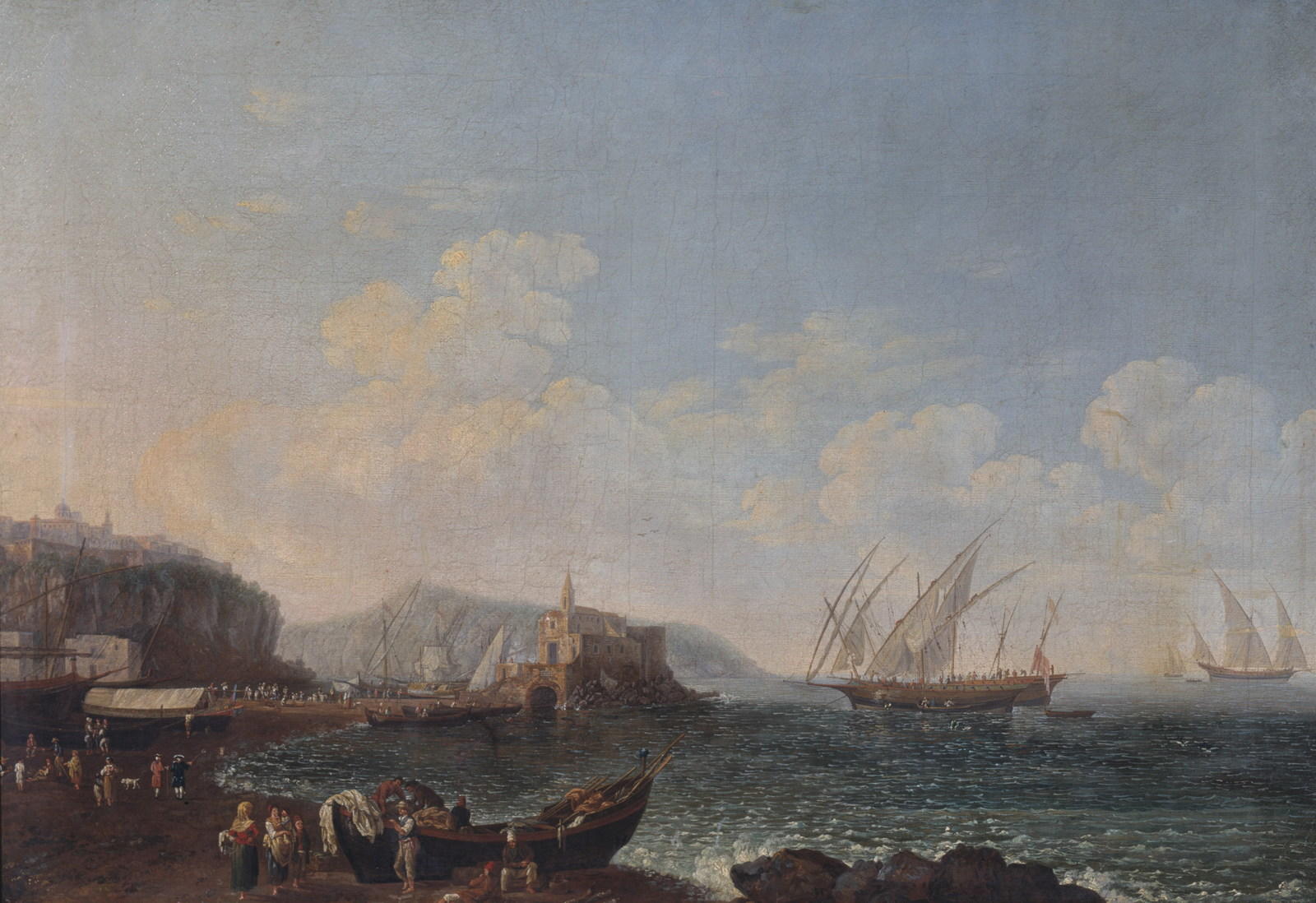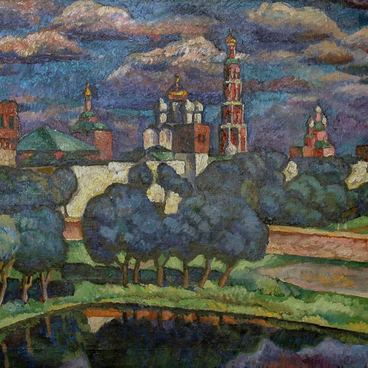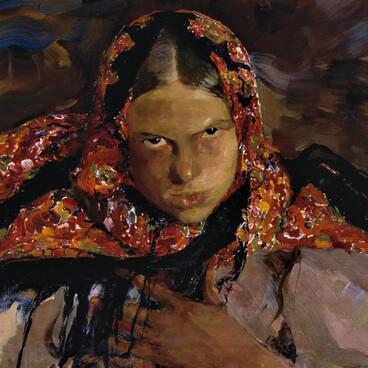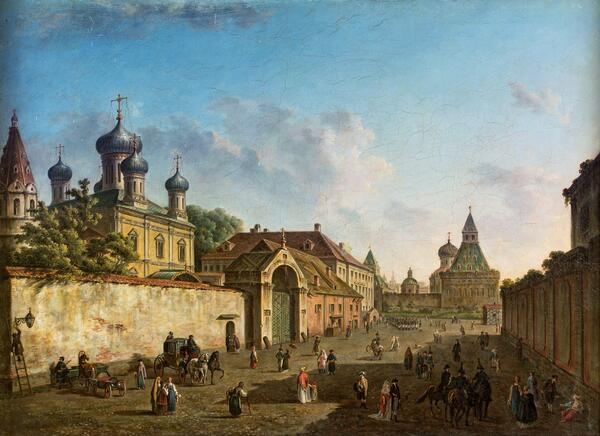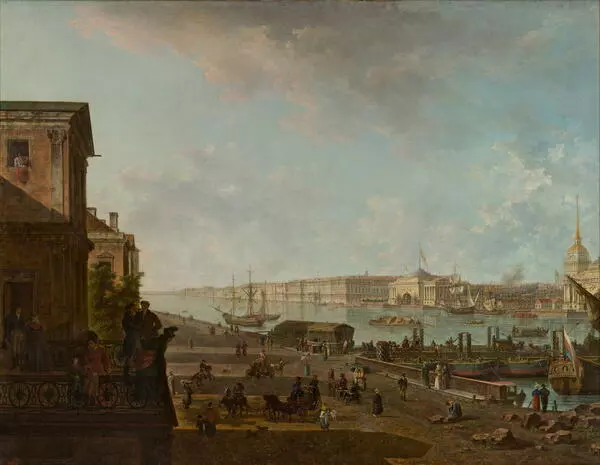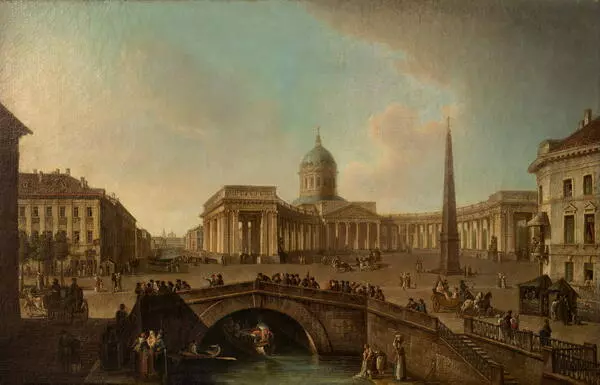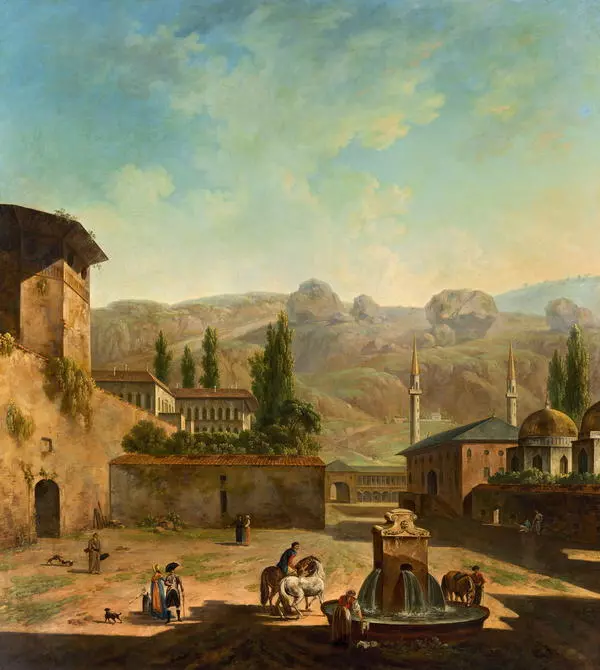Fedor Alekseev was born in 1753 in the family of a retired soldier, Yakov Alekseev, who was a watchman at the Saint Petersburg Academy of Arts.
In 1764, the father of the future artist filed a petition addressed to Empress Catherine the Great to admit Fedor at the Academy of Arts. His request was granted. At first, Alekseev studied ‘fruit and flower painting’, or still life. Then he took a landscape class.
The artist graduated from the Academy with a minor gold medal, he was awarded a sword, and a trip to Italy. In 1773, the artist arrived in Venice, where he was to study theatrical scenic painting. Alekseev did not write to the Academy of Arts about his work for two years, and so, he was considered the least successful of the graduates.
In 1777, the artist returned to Saint Petersburg, determined to paint landscapes. However, Alekseev was assigned to the Imperial Theater Department, where he was registered. The painter managed to leave the job he hated, as he copied landscapes by Italian artists from the Hermitage collection. They brought him the glory of ‘the Russian Canaletto’ and the long-awaited opportunity to paint original artworks.
One of these copies was “Seascape. View of Lipari and Stromboli, ” displayed at the exhibition. Art experts suggest that Alekseev painted it at the request of Empress Catherine the Great. Nina Arning-Zaytseva, the widow of the collector Kazimir Arning, donated the art piece to the museum in 1980.
The painting is a smaller copy of the work of the German artist Jacob Philipp Hackert. However, art experts define Alekseev’s landscape as a romantic interpretation of the original.
The artist painted the work based on Hackert’s dry classical landscape in a soft and light manner, in pastel colors. The austere realism and meticulous detail of Hackert’s paintings were alien to Alekseev. Therefore, the latter created a more idyllic view, typical of the romantic landscapes of the 19th century.
In 1794, Alekseev acquired the title of academician of perspective painting. Next year, he was sent to Novorossiya and Crimea to paint local views. Then, he worked on Saint Petersburg views, which were highly appreciated by critics. Alekseev’s paintings became very popular. Many noble people purchased them for their collections, including members of the royal family and even Emperor Alexander I.
In December 1802, Alekseev was elected as a Counselor of the Academy of Art. From 1803 until the end of his life, he headed a specially created class of perspective painting. His students were Maksim Vorobyov and Sylvester Shchedrin.
In 1764, the father of the future artist filed a petition addressed to Empress Catherine the Great to admit Fedor at the Academy of Arts. His request was granted. At first, Alekseev studied ‘fruit and flower painting’, or still life. Then he took a landscape class.
The artist graduated from the Academy with a minor gold medal, he was awarded a sword, and a trip to Italy. In 1773, the artist arrived in Venice, where he was to study theatrical scenic painting. Alekseev did not write to the Academy of Arts about his work for two years, and so, he was considered the least successful of the graduates.
In 1777, the artist returned to Saint Petersburg, determined to paint landscapes. However, Alekseev was assigned to the Imperial Theater Department, where he was registered. The painter managed to leave the job he hated, as he copied landscapes by Italian artists from the Hermitage collection. They brought him the glory of ‘the Russian Canaletto’ and the long-awaited opportunity to paint original artworks.
One of these copies was “Seascape. View of Lipari and Stromboli, ” displayed at the exhibition. Art experts suggest that Alekseev painted it at the request of Empress Catherine the Great. Nina Arning-Zaytseva, the widow of the collector Kazimir Arning, donated the art piece to the museum in 1980.
The painting is a smaller copy of the work of the German artist Jacob Philipp Hackert. However, art experts define Alekseev’s landscape as a romantic interpretation of the original.
The artist painted the work based on Hackert’s dry classical landscape in a soft and light manner, in pastel colors. The austere realism and meticulous detail of Hackert’s paintings were alien to Alekseev. Therefore, the latter created a more idyllic view, typical of the romantic landscapes of the 19th century.
In 1794, Alekseev acquired the title of academician of perspective painting. Next year, he was sent to Novorossiya and Crimea to paint local views. Then, he worked on Saint Petersburg views, which were highly appreciated by critics. Alekseev’s paintings became very popular. Many noble people purchased them for their collections, including members of the royal family and even Emperor Alexander I.
In December 1802, Alekseev was elected as a Counselor of the Academy of Art. From 1803 until the end of his life, he headed a specially created class of perspective painting. His students were Maksim Vorobyov and Sylvester Shchedrin.
